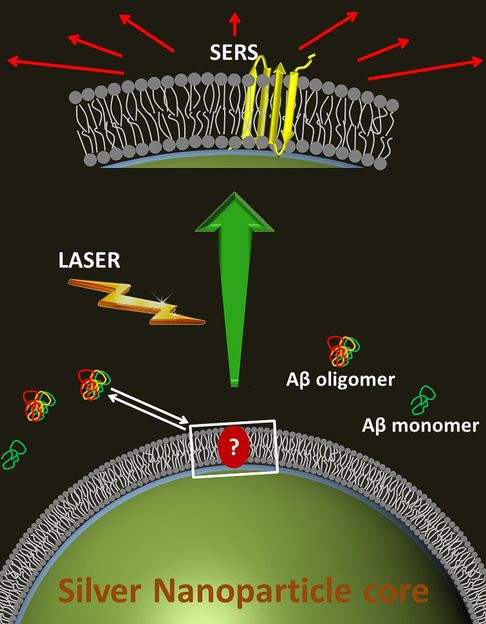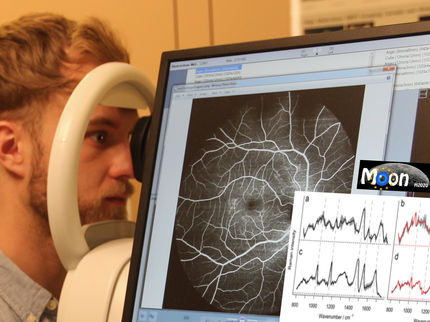Glitter from silver lights up Alzheimer's dark secrets
Advertisement
Scientists have caught a glimpse of the elusive toxic form of the Alzheimer's molecule, during its attempt to bore into the outer covering of a cell decoy, using a new method involving laser light and fat-coated silver nano-particles.

Debanjan Bhowmik, TIFR, Mumbai
While the origin of Alzheimer's Disease, one that robs the old of their memory, is still hotly debated, it is likely that a specific form of the Amyloid beta molecule, which is able to attack cell membranes, is a major player. Defeating this molecule would be easier if its shape and form were known better, but that has proven to be a difficult task until now.
"Everybody wants to make the key to solve Alzheimer's Disease, but we don't know what the lock looks like. We now have a glimpse of something which could be the lock. May be it's still not the real thing, but as of now, this is our best bet", says Sudipta Maiti, who co-directed the efforts with P. K. Madhu (both from TIFR). If they are right, then designing the key, i.e. making a drug molecule which can attack the lock, may be more achievable now.
The lock looks like a bunch of amyloid beta molecules in the shape of a hairpin, but with a twist. Debanjan Bhowmik, the lead contributor of the study says "This has been suspected earlier, but what we found was an unexpected twist in the structure, now becoming a beta-hairpin - very different from the typical hairpin structure people imagined. This may allow these bunch of amyloid beta molecules to form toxic pores in the cell membranes".
They studied a tiny laser-induced signal from the amyloid beta which reported their shape. A critical modification in the original Raman Spectroscopy technique allowed the measurement of tiny signals that would otherwise have gone unnoticed. They encased silver nanoparticles in a fat layer ("membrane") that mimicked the outer membranes of living cells. According to co-author Gilbert Walker, "While the amyloid beta got fooled by it and stuck to the membrane, the silver inside enhanced the signal to a measurable level and acted as a light beacon to reveal the peptide signature". The technique offers promise for deciphering the shape of many such membrane molecules, some of which may be related to other types of diseases.
Original publication
Debanjan Bhowmik, Kaustubh R. Mote, Christina M. MacLaughlin, Nupur Biswas, Bappaditya Chandra, Jaydeep K. Basu, Gilbert C. Walker, Perunthiruthy K. Madhu, and Sudipta Maiti; "Cell-Membrane-Mimicking Lipid-Coated Nanoparticles Confer Raman Enhancement to Membrane Proteins and Reveal Membrane-Attached Amyloid-β Conformation"
Other news from the department science
Most read news
More news from our other portals
See the theme worlds for related content
Topic World Spectroscopy
Investigation with spectroscopy gives us unique insights into the composition and structure of materials. From UV-Vis spectroscopy to infrared and Raman spectroscopy to fluorescence and atomic absorption spectroscopy, spectroscopy offers us a wide range of analytical techniques to precisely characterize substances. Immerse yourself in the fascinating world of spectroscopy!

Topic World Spectroscopy
Investigation with spectroscopy gives us unique insights into the composition and structure of materials. From UV-Vis spectroscopy to infrared and Raman spectroscopy to fluorescence and atomic absorption spectroscopy, spectroscopy offers us a wide range of analytical techniques to precisely characterize substances. Immerse yourself in the fascinating world of spectroscopy!


























































